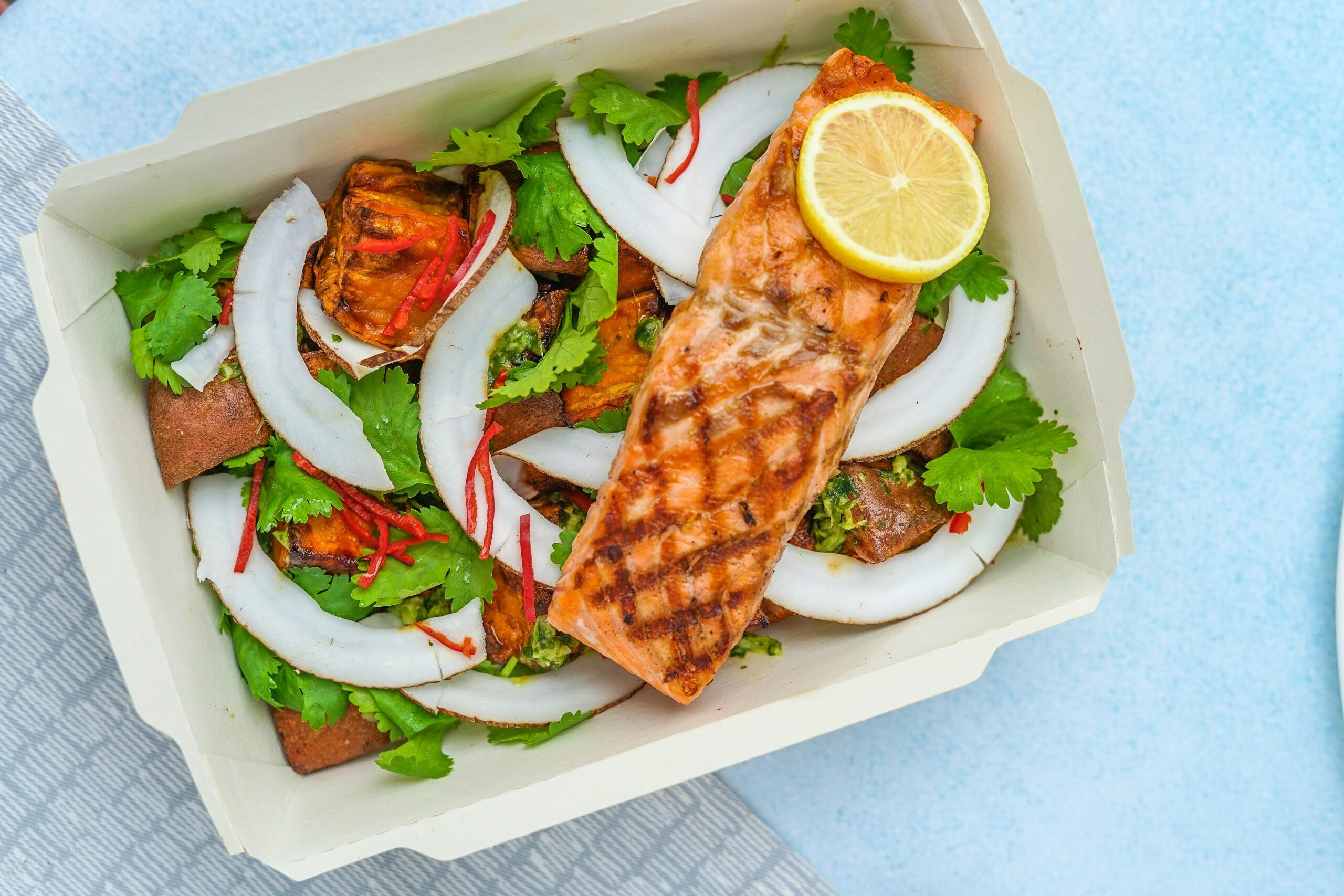You’re embarking on a journey towards a healthier you, and you’ve heard about the ketogenic diet. You’re intrigued by the potential benefits of this low-carb, high-fat eating plan, but you find yourself wondering, “What is a good carb limit for keto?” Well, fret no more, because in this article, we’ll explore the ideal carbohydrate intake for those following a keto lifestyle and discover how it can help you achieve your health and weight loss goals. So get ready to unlock the secrets to keto success and embrace a carb limit that will maximize your results!
What is Keto Diet?
The Keto Diet, short for Ketogenic Diet, is a low-carbohydrate, high-fat diet that has gained popularity in recent years for its potential health benefits, particularly for weight loss. The diet involves drastically reducing your carbohydrate intake and replacing it with fats, forcing your body into a metabolic state called ketosis. In ketosis, your body becomes highly efficient at burning fat for energy instead of relying on carbohydrates. This shift in fuel source can lead to weight loss, increased energy levels, and improved overall health.
Definition of Keto Diet
The Keto Diet is a specific eating plan that focuses on consuming foods low in carbohydrates, moderate in protein, and high in healthy fats. The traditional macronutrient breakdown for a standard Keto Diet is approximately 75% fat, 20% protein, and only 5% carbohydrates. This strict restriction of carbohydrates is essential for achieving and maintaining a state of ketosis.
History and Origin
The Keto Diet originated in the early 1920s as a treatment for epilepsy, primarily in children. Doctors observed that fasting or following a low-carbohydrate, high-fat diet could significantly reduce the frequency and severity of seizures in epileptic patients. This led to the development of the traditional Ketogenic Diet, which aimed to mimic the effects of fasting by restricting carbohydrate intake and increasing fat consumption.
Over time, the benefits of the Keto Diet extended beyond epilepsy management, and its use expanded to include weight loss, improved insulin sensitivity, and increased mental clarity. Today, the Keto Diet has gained mainstream popularity as a way to achieve various health goals and has become a lifestyle choice for many individuals.
Fundamental principles of the Keto Diet
At its core, the Keto Diet relies on the principle of carbohydrate restriction and achieving a state of ketosis. By severely limiting carbohydrate consumption, typically to 20-50 grams per day, your body is forced to enter ketosis. In this state, it begins to burn stored fat for energy instead of glucose derived from carbohydrates.
To stay in ketosis, it is important to consume an adequate amount of healthy fats and moderate protein. This is because excessive protein intake can lead to a process called gluconeogenesis, where proteins are converted into glucose, potentially disrupting ketosis. Hence, maintaining the proper balance of macronutrients is crucial to successfully following the Keto Diet.
The Role of Carbohydrates in a Typical Diet
Function of Carbohydrates in the body
Carbohydrates play a vital role in our body’s energy production. When consumed, carbohydrates are broken down into glucose, which is used as the primary source of fuel for our cells. Glucose provides quick energy and is essential for brain function, muscle contractions, and other bodily processes.
Sources of Carbohydrates
Carbohydrates are found in a wide range of foods, including grains (such as rice, wheat, and oats), starchy vegetables (potatoes, corn, and peas), fruits, and sugary foods. It is important to differentiate between complex carbohydrates (found in whole grains and fiber-rich foods) and simple carbohydrates (found in processed foods and sweets), as they have different effects on the body.
Effect of excessive Carbohydrate intake
While carbohydrates are essential for energy, consuming excessive amounts can lead to weight gain and other health issues. When we consume more carbohydrates than our body needs for immediate energy, the excess is converted to glycogen and stored in the liver and muscles. However, there is a limit to how much glycogen our body can store. Once these stores are full, any additional carbohydrates consumed are converted to fat, leading to weight gain over time.
Moreover, consuming high amounts of refined carbohydrates, such as processed sugars and white flour products, can cause rapid spikes in blood sugar levels. These spikes are followed by a crash, leaving you feeling tired, hungry, and craving more carbohydrates. This cycle can contribute to weight gain, insulin resistance, and an increased risk of chronic diseases such as diabetes and heart disease.

Understanding Carbohydrate Restriction in Keto Diet
The Science behind Carbohydrate restriction
Carbohydrate restriction is the foundation of the Keto Diet. When you significantly reduce your carbohydrate intake, your body begins to deplete its glycogen stores, causing a shift in energy utilization. With limited glucose available, your body turns to an alternative fuel source: fat. This metabolic state is known as ketosis.
Restricting carbohydrates also results in lower insulin levels in the body. Insulin is a hormone that helps regulate blood sugar levels and facilitates the storage of excess glucose as fat. By minimizing carbohydrate intake, the need for insulin production decreases, enabling the body to utilize stored fats for energy.
Converting fat to energy: Ketosis
In the absence of sufficient carbohydrates, your liver starts to convert fats into molecules called ketones through a process called ketogenesis. Ketones can cross the blood-brain barrier and become an alternative fuel source for the brain, providing energy without the need for glucose.
When ketones become the primary fuel source, your body is said to be in a state of ketosis. Being in ketosis allows your body to efficiently burn fat for energy, leading to potential weight loss and increased mental clarity.
Effects of Carbohydrate restriction on the body
Besides promoting fat burning and weight loss, carbohydrate restriction has several other beneficial effects on the body. By reducing carbohydrate intake, the Keto Diet helps stabilize blood sugar levels, which can be particularly beneficial for individuals with insulin resistance or diabetes.
Carbohydrate restriction has also been shown to improve cholesterol levels by increasing levels of high-density lipoprotein (HDL) cholesterol (“good” cholesterol) and reducing levels of low-density lipoprotein (LDL) cholesterol (“bad” cholesterol).
Additionally, many people report experiencing reduced hunger and cravings when following a low-carb, high-fat diet. This can make it easier to adhere to the Keto Diet and lead to a reduction in overall calorie intake, further contributing to weight loss.
Determining the Right Carb Limit for Keto Diet
Standard Carb limit for Keto Diet
The standard recommendation for carbohydrate intake on the Keto Diet is typically between 20-50 grams of net carbs per day. Net carbs refer to the total carbohydrates minus the fiber content, as fiber does not significantly impact blood sugar levels.
In the early stages of the Keto Diet, individuals often aim for the lower end of this range to ensure they achieve and maintain ketosis. As you become more familiar with the diet and understand how your body responds to different carbohydrate levels, you may experiment with slightly higher carb limits while still staying within ketosis.
Individual Factors affecting Carb limit
It is important to note that the ideal carbohydrate limit for the Keto Diet can vary from person to person. Various individual factors can influence the specific carbohydrate threshold that allows you to achieve and maintain ketosis effectively.
Some of the key factors that affect the optimal carb limit for an individual include their activity level, metabolic rate, and personal goals (such as weight loss or muscle gain). Additionally, certain medical conditions or medications may impact how your body responds to the Keto Diet, and consultation with a healthcare professional is advisable in such cases.
How to calculate your Carb limit
To determine your specific carbohydrate limit for the Keto Diet, you can start by following the general guideline of 20-50 grams of net carbs per day. Begin at the lower end of the range and monitor your body’s response, including changes in weight, energy levels, and ketone production.
Gradually increase your carbohydrate intake in small increments, while consistently tracking your progress and observing any changes in ketosis. This iterative process will help you find the optimal carb limit that allows you to reach and maintain ketosis while still enjoying a varied diet.

Implementing Low Carb Intake in Your Diet
Reducing Carb intake gradually
If you currently consume a diet that is high in carbohydrates, it is generally recommended to reduce your carb intake gradually rather than making a sudden, drastic change. This approach allows your body to adjust more easily and may minimize potential side effects, commonly referred to as the “Keto Flu” (discussed later in the article).
Start by identifying the main sources of carbohydrates in your diet, such as bread, pasta, rice, and sugary snacks. Begin substituting these high-carb foods with lower-carb alternatives. For example, replace regular pasta with zucchini noodles, use lettuce wraps instead of bread for sandwiches, and opt for cauliflower rice instead of traditional rice.
Choosing low-Carb foods
When following the Keto Diet, it is essential to choose foods that are low in carbohydrates while being high in healthy fats. Some excellent low-carb food choices include:
- Meat and poultry: Beef, chicken, pork, lamb, and turkey.
- Fish and seafood: Salmon, trout, shrimp, crab, and lobster.
- Eggs: A versatile and nutritious source of protein and healthy fats.
- Low-carb vegetables: Leafy greens, broccoli, cauliflower, zucchini, bell peppers, and asparagus.
- Healthy fats: Avocado, olive oil, coconut oil, butter, and ghee.
- Nuts and seeds: Almonds, walnuts, chia seeds, and flaxseeds.
It is crucial to read nutrition labels and be aware of hidden sources of carbohydrates, such as added sugars and starchy fillers, commonly found in processed foods. Opt for whole, minimally processed foods whenever possible.
Monitoring your Carb intake
To ensure you stay within your desired carbohydrate limit, it is essential to monitor your carb intake regularly. Many mobile apps and websites offer convenient tools for tracking macronutrient intake, making it easier to log and monitor your carbohydrate consumption.
Keep track of portion sizes and the carbohydrate content of the foods you eat. This will help you maintain an accurate record and allow you to make adjustments if needed. Regular monitoring will not only keep you accountable but also provide valuable insights into how different foods and portion sizes impact your progress on the Keto Diet.
Health Benefits and Risks of the Keto Diet
Weight loss benefits
One of the primary reasons people turn to the Keto Diet is for weight loss. By restricting carbohydrates and increasing fat intake, the body is forced to burn stored fat as its primary source of fuel. This can lead to significant and sustainable weight loss.
Furthermore, the Keto Diet has been shown to suppress appetite and reduce cravings, making it easier for individuals to adhere to a calorie-restricted diet. The high-fat content of the diet also provides a sense of satiety, helping to prevent overeating.
Risk of nutrient deficiencies
The Keto Diet can potentially result in deficiencies in certain essential nutrients, such as vitamins and minerals. Since many carbohydrate-rich foods are also excellent sources of these nutrients, eliminating them from your diet may require careful consideration and supplementation.
To minimize the risk of nutrient deficiencies, focus on consuming a wide variety of low-carb, nutrient-dense foods. Include plenty of leafy greens, non-starchy vegetables, and foods rich in healthy fats, such as avocados and nuts. Additionally, consulting with a healthcare professional or registered dietitian can help ensure you meet your nutrient needs while following the Keto Diet.
Effect on blood sugar and insulin levels
The Keto Diet has shown promising results in improving blood sugar control and insulin sensitivity, particularly in individuals with insulin resistance or type 2 diabetes. By reducing carbohydrate intake and minimizing insulin spikes, the diet can help stabilize blood sugar levels and potentially reduce the need for diabetes medication.
However, it is important to closely monitor blood sugar levels and consult with a healthcare professional, especially if you are currently managing diabetes with medication. Medication adjustments may be necessary to prevent hypoglycemia or other complications while following the Keto Diet.

Achieving Weight Loss Goals with Keto Diet
How fast can you lose weight with Keto Diet
The rate of weight loss on the Keto Diet can vary significantly from person to person. Factors such as your starting weight, overall calorie intake, level of physical activity, and individual metabolic rate can all influence the speed at which you lose weight.
While some individuals may experience rapid weight loss in the initial stages of the diet, primarily due to water weight loss, a more sustainable weight loss rate is generally around 1-2 pounds per week. This gradual and steady weight loss is more likely to result in long-term success and is generally considered healthier for your body.
Ensuring weight loss sustainability in Keto Diet
To ensure long-term weight loss sustainability on the Keto Diet, it is essential to adopt a balanced and varied eating plan. While the diet emphasizes high fat consumption, it is crucial to focus on incorporating healthy fats, such as avocados, nuts, and olive oil. Additionally, include a variety of proteins, both animal-based and plant-based, and plenty of low-carb vegetables to provide essential nutrients and maintain overall health.
Remember that weight loss is not just about the number on the scale. Focus on other markers of progress, such as improved energy levels, better sleep quality, and enhanced physical fitness. Celebrating these non-scale victories can help you stay motivated and committed to your weight loss journey.
Success stories of weight loss with Keto Diet
Numerous individuals have achieved significant weight loss success through the Keto Diet. These success stories often highlight the effectiveness of the diet in promoting fat burning, reducing appetite, and improving overall health markers.
While results can vary, many people report not just weight loss but also improvements in conditions such as metabolic syndrome, polycystic ovary syndrome (PCOS), and type 2 diabetes. The Keto Diet has also been associated with lower triglyceride levels, increased levels of HDL cholesterol, and improved blood pressure control.
Genetic and Lifestyle Factors Affecting Keto Diet Carb Limit
Influence of genetic makeup
Genetic factors can significantly impact an individual’s response to the Keto Diet and their carbohydrate tolerance. Some people may have a genetic predisposition to insulin resistance or difficulty metabolizing dietary fats, which could affect their ability to enter or maintain ketosis efficiently.
While genetic factors cannot be altered, being aware of your family history and considering genetic testing may provide valuable insights into potential challenges and individualized approaches to the Keto Diet.
Role of physical activity level
Physical activity plays a crucial role in determining an individual’s carbohydrate tolerance on the Keto Diet. Regular exercise helps deplete glycogen stores and enhance the body’s ability to utilize stored fats for energy. This can potentially allow for a slightly higher carbohydrate intake while staying in ketosis.
Depending on the intensity and duration of your workouts, you may need to adjust your carbohydrate intake accordingly. Experimenting with different carb limits and monitoring your body’s response can help you find the right balance between physical activity and carb restriction.
Impact of age and gender
Age and gender can also influence an individual’s carbohydrate tolerance and response to the Keto Diet. As we age, our metabolic rate may slow down, making it more challenging to enter and maintain ketosis. Additionally, hormonal fluctuations in women, such as those that occur during menstruation and menopause, can impact carbohydrate cravings and overall diet adherence.
It is important to listen to your body, make adjustments as needed, and seek guidance from a healthcare professional or registered dietitian who can provide specialized advice based on your unique circumstances.
Dealing with Carb Cravings on a Keto Diet
Understanding Carb cravings and how they occur
Carb cravings can be a common challenge when following the Keto Diet. Cutting out carbohydrates, especially those that may have been staples in your previous diet, can initially trigger intense cravings.
Carb cravings often result from a combination of physiological and psychological factors. Physiologically, your body may still be adjusting to utilizing fats as its primary fuel source and may send signals to crave carbohydrates. Psychologically, habits and emotional associations with certain carb-rich foods can trigger cravings.
Best Keto-friendly snacks to curb cravings
When carb cravings strike on the Keto Diet, it is important to have suitable alternatives on hand to satisfy your cravings without derailing your progress. Opt for keto-friendly snacks that are low in carbohydrates and high in healthy fats. Some options include:
- Avocado: A creamy and nutrient-dense snack that is rich in healthy fats.
- Nuts and seeds: Almonds, walnuts, chia seeds, and flaxseeds make for convenient and satisfying snacks.
- Cheese: String cheese, cheese slices, and cheese crisps are excellent sources of fat and protein.
- Olives: These briny treats provide healthy fats and are packed with flavor.
- Hard-boiled eggs: A portable protein and fat source that can keep you feeling satisfied.
It is important to note that portion control is still essential, even with keto-friendly snacks. While they can help curb cravings, it is important to maintain an overall balanced and moderate intake to achieve your weight loss and health goals.
How to manage Carb refeeds
In some cases, individuals following the Keto Diet may choose to incorporate carbohydrate refeeds strategically. Carb refeeds involve temporarily increasing carbohydrate intake for a specific period, usually 24-48 hours, before returning to the standard low-carb, high-fat regimen.
Carb refeeds can help replenish glycogen stores, alleviate feelings of deprivation, and provide a temporary break from the strictness of the Keto Diet. However, it is important to approach carb refeeds mindfully and understand their potential impact on your body’s transition in and out of ketosis. Consultation with a healthcare professional or registered dietitian is advisable before incorporating carb refeeds into your Keto Diet plan.
How to Maintain a Keto Diet Long-Term
The process of Keto-adaptation
Keto-adaptation refers to the body’s ability to efficiently utilize fats for energy in the absence of carbohydrates. While it varies from person to person, the process of fully adapting to the Keto Diet can take several weeks to a few months.
During this adaptation period, you may experience symptoms collectively known as “Keto Flu.” These symptoms can include fatigue, headaches, brain fog, irritability, and muscle cramps. They typically arise due to the body transitioning from using carbohydrates as its primary fuel source to relying on fats.
To ease the transition and promote keto-adaptation, ensure you are consuming enough healthy fats, staying well-hydrated, replenishing electrolytes, and getting sufficient rest. These strategies can help mitigate the symptoms of the Keto Flu and support your long-term commitment to the Keto Diet.
Dealing with the ‘Keto Flu’
The Keto Flu is a temporary set of symptoms that some individuals experience during the initial stages of the Keto Diet. These symptoms often arise due to the body’s adjustment to utilizing fats as its primary fuel source instead of carbohydrates.
To alleviate the symptoms of the Keto Flu, focus on proper hydration, electrolyte balance, and adequate rest. Increase your intake of water and consider incorporating foods rich in electrolytes, such as avocados, leafy greens, and bone broth, into your diet. Additionally, ensure you are getting enough rest to support your body’s adaptation process.
Balancing your diet for long-term commitment
To maintain a Keto Diet long-term, it is essential to achieve a well-rounded and balanced eating plan. While the diet emphasizes high-fat consumption, it is crucial to prioritize healthy fats, such as those found in avocados, olive oil, and nuts. Incorporate a variety of protein sources, including lean meats, fish, legumes, and tofu, to ensure adequate amino acid intake.
Aim for a wide variety of non-starchy vegetables to provide essential vitamins, minerals, and fiber. These vegetables, such as leafy greens, broccoli, and bell peppers, offer valuable nutrients while keeping carbohydrate intake in check.
Lastly, monitor your overall calorie intake to ensure you are not overeating, as excessive calorie consumption can impede weight loss progress. Remember that the Keto Diet is not a free pass to consume unlimited amounts of fat. Moderation and balance remain key to long-term success.
In conclusion, the Keto Diet is a low-carbohydrate, high-fat eating plan that can lead to significant weight loss and various health benefits. By understanding the role of carbohydrates, determining the right carb limit, and making gradual changes to your diet, you can successfully implement the Keto Diet and achieve your weight loss goals. However, it is important to be aware of potential risks and consult with a healthcare professional before starting any new dietary regimen, especially if you have underlying medical conditions. With proper knowledge, patience, and commitment, the Keto Diet can be a sustainable and effective approach to improving your overall health and wellbeing.

